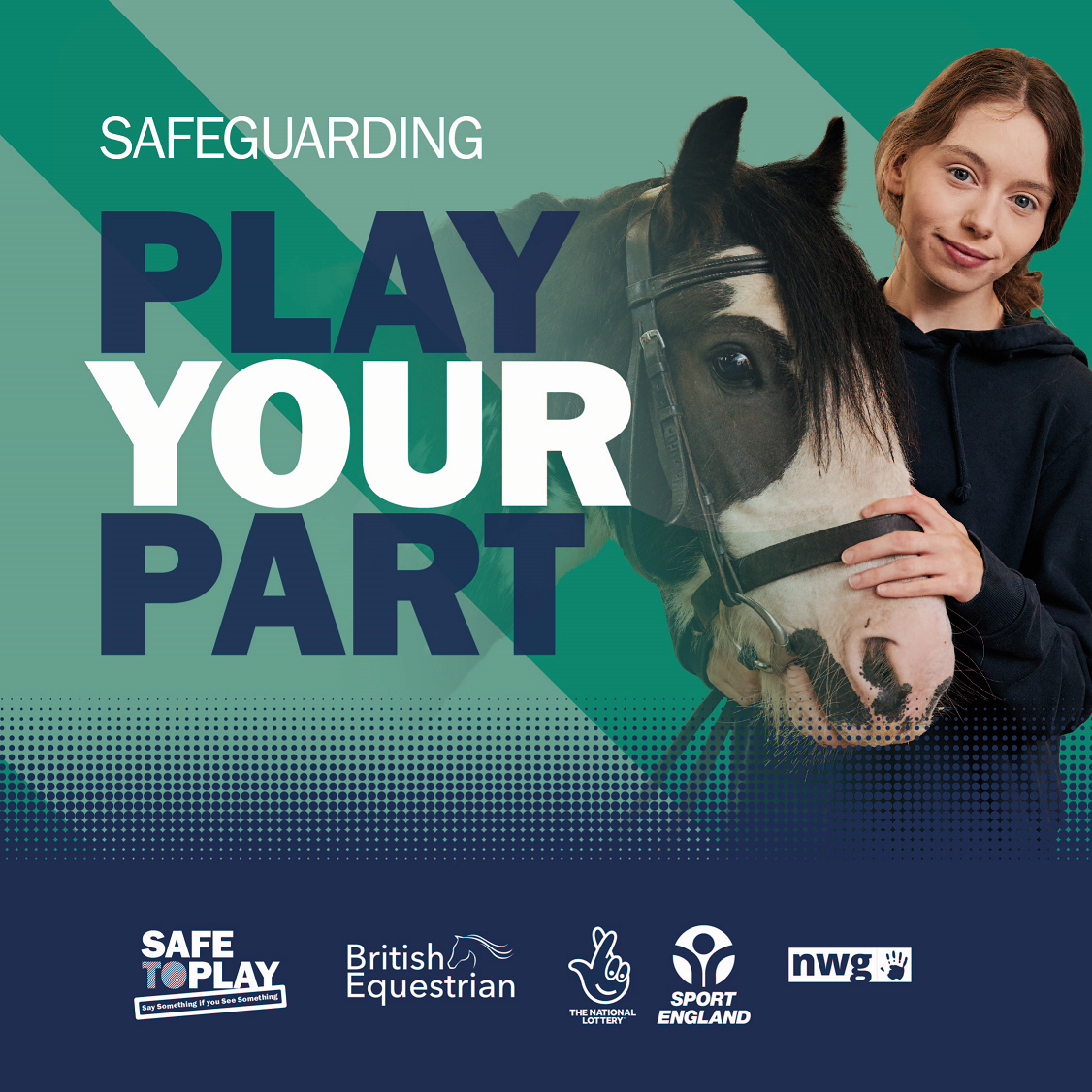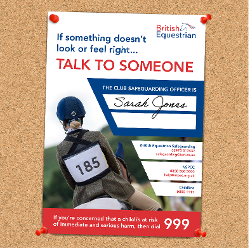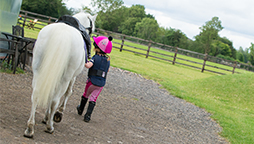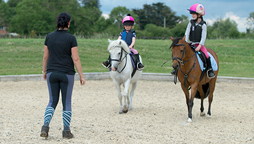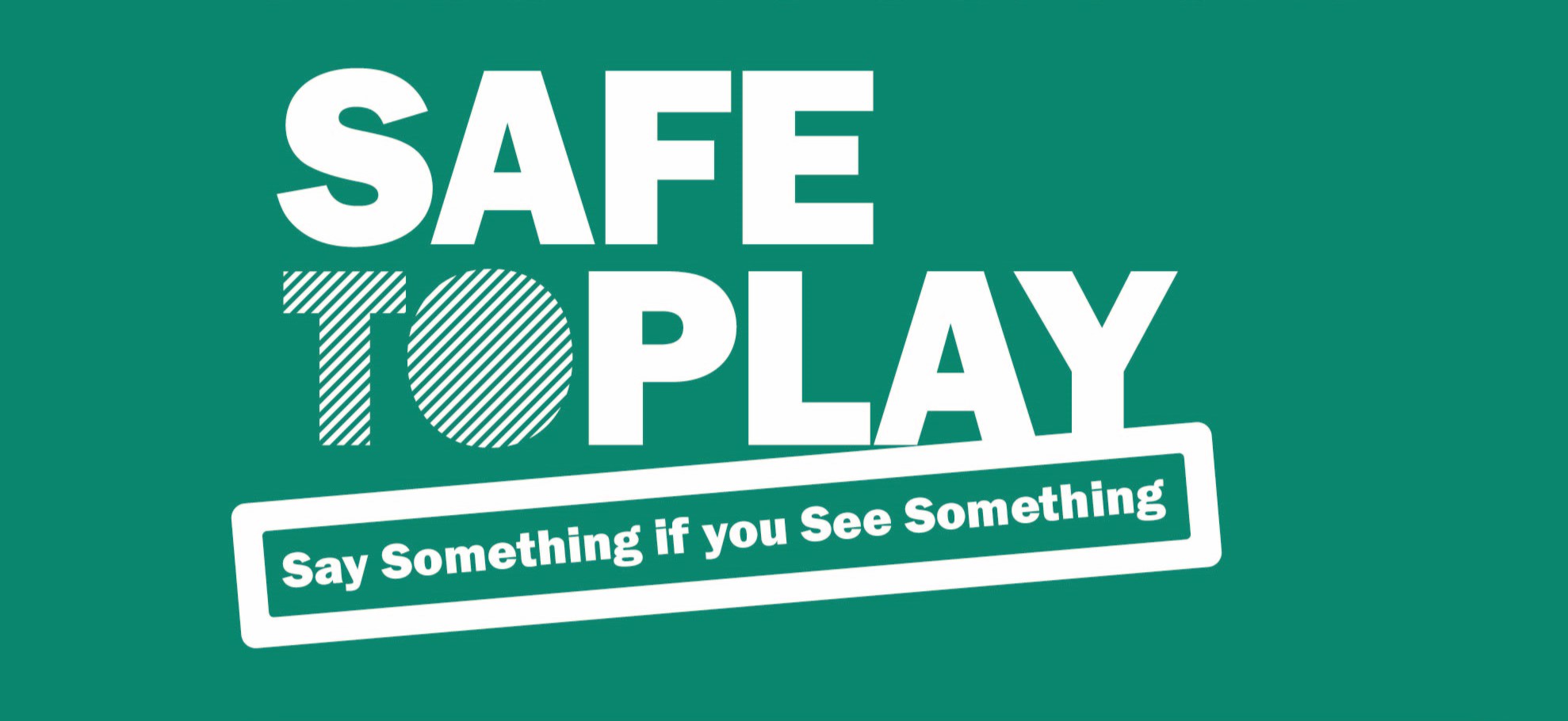Running safe events
Any organisation that provides activities for children, young people or adults at risk should have safeguarding policies and procedures in place. A policy sets out your commitment as the organiser to keeping children, young people and adults at risk safe, and how, in broad terms, you will do so.
If you're planning to run an event at your centre or club, from a own-a-pony day to a one-day event, you'll need to ensure that your policy and procedures link to and comply with requirements of your member body.
Visit our safeguarding web hub, Safe to Play for top tips and key information for coaches, venues, officials and volunteers.
This page outlines the different elements you'll need to consider in order to run a safe event that's enjoyable for participants, staff, volunteers, parents and carers.
Key roles at events
Event Organiser
This is the person who's assigned responsibility for organising and the overall running of the event. Within a club, this person may be someone from the committee or club management, or an accredited coach. This person should have undertaken at least the Equestrian Basic Safeguarding Awareness online training. You can find out more about this training course by clicking here.
The event organiser's responsibilities include...
- being ultimately responsible for safeguarding, health and safety matters, and the duty of care towards participants, spectators and the event team
- appointing a suitable person to take on lead safeguarding responsibilities for the event
- in partnership with the event safeguarding lead, undertaking a pre-event safeguarding risk assessment ensuring planning includes:
- staffing levels and safe recruitment
- medical/first-aid provision
- details for local medical, police and children’s social care/social services
- registration and consents arrangements
- signing up to codes of conduct for participants and event staff
Event safeguarding lead
Within a club, this is likely to be the existing designated safeguarding person, such as the club safeguarding officer. This person should have undertaken the British Equestrian Safeguarding for Equestrians training (more information here) or equivalent.
The event safeguarding lead's responsibilities include...
- being responsible for safeguarding participants and other young people or adults at risk at the event
- undertaking a pre-event safeguarding risk assessment
- receiving, responding to and managing any safeguarding issues that arise at or following the event
- reporting any concerns to the relevant authorities and Member Body safeguarding team
- ensuring that all event staff and volunteers understand their safeguarding responsibilities and know how to respond if concerns or allegations arise at the event
- providing pre-event safeguarding training/briefings for staff and volunteers
- ensuring that all parental registration, consents and medical information have been received before the event
- if relevant, ensuring an appropriate event level of security at the venue to prevent both unauthorised persons gaining access and participants going missing
- ensuring that all participants, staff and volunteers have signed up to the relevant codes of conduct
- having contact numbers for local statutory services, including medical, social care and police numbers (these can be found on your local authority/police website), the Member Body Safeguarding Officer, and for the local authority designated officer (LADO) in England
Further information on the Safeguarding Officer role can be found in the document below.
Other event staff and volunteers
Staff and volunteers should...
- complete as a minimum the Equestrian Basic Safeguarding Awareness online training (more information here) or pre-event safeguarding training/briefings
- understand their safeguarding responsibilities and what to do if a safeguarding concern arises
- familiarise themselves with the event safeguarding plan and appropriate lines of communication
- read and sign up to the relevant event code of conduct
- complete a satisfactory criminal records check if needed. More information about criminal record checked can be found here.
Completing a Safeguarding Risk Assessment
A safeguarding risk assessment outlines the safeguarding guidance for the event. It draws together a wide range of safeguarding information into one document.
For smaller events such as club competitions or training sessions, the event safeguarding plan may comprise of the relevant club/centre’s safeguarding documents, including the safeguarding policy and codes of conduct etc, which are collated and checked to ensure they meet the event requirements.
At larger events, camps, overnight stays or international trips that may involve more than one club, we recommend creating a specific event safeguarding risk assessment, which sets the minimum operating standards for all participating individuals and clubs/organisations. Participating clubs, organisations or teams should sign an agreement confirming their understanding of and compliance with these safeguarding requirements. The plan will also reflect event organisers’ responsibilities to take immediate action and for ensuring communication with the member body, police or local authority should an incident arise.
Preparation for an event may take months of planning, so it's important that you fully incorporate safeguarding throughout this process. All staff and volunteers are expected to read, understand and implement the requirements set out in the event safeguarding plan.
All safeguarding risk assessments aim to:
- minimise the risk to all
- encourage the enjoyment of all involved
- maximise the opportunity for children, young people and adults at risk to participate to the best of their ability
Pre-event risk assessment
Assessing the risks at any event is absolutely essential, even if the event has been successfully run before. The principles outlined in the following information apply to any event, but you'll need to assess the relevance for your particular activity in terms of scale, venue and locality, participants, staff, volunteers and so on.
Establish whose responsibility it will be to undertake risk assessments of each elements of the event. Some of the key issues to consider are...
- safe Recruitment
- consents
- codes of conduct
- ratio of supervisors to children/young people/adults at risk
- communicating with parents/carers
- photography
- social media
- missing children
- responding to concerns
Risk Assessment templates are available on the links below
Safeguarding Risk Assessment for Training Sessions
Safeguarding Risk Assessment for Competitions
Safeguarding Risk Assessment for Camps Overnight Stays International Trips
Consent form for trips and events (WORD doc.)
Consent form for trips and events (PDF)
Information for participants, parents, staff and volunteers
It's essential that everyone at an event can access safeguarding information in a suitable format. Everyone should be clear about...
- how they are expected to behave at the event
- their safeguarding responsibilities, including a duty to report concerns
- the kinds of concerns that will require a response
- to whom and how concerns should be reported, including use of an incident reporting form like the one below
- sources of support
Incident reporting form (Word doc.)
Accident reporting form (Word doc.)
Clearly displaying the Safeguarding poster below will help everyone to know who to talk to.
Creating a Safe Environment
Codes of conduct
Codes of conduct help individuals to understand their organisation’s expectations of them and provide a benchmark for identifying inappropriate behaviour.
Everyone involved, whether they're a child, parent, member of staff or a volunteer, should be fully aware of the expectations upon them, and agree to abide by and sign up to the code of conduct relevant to them.
Organisers should develop a code of conduct that...
- outlines expected good practice at an event
- is written in language appropriate to the group/age to which it applies
- creates an environment in which bullying, verbal abuse, racism, sexism and any form of discriminatory behaviours aren't tolerated
- gives clear guidance about when behaviour might be considered to be inappropriate in a relationship between adults and young people
- sets out how any breaches to codes will be managed.
When developing codes of conduct, you should consider...
- behaviour (including bullying) and personal conduct
- use of electronic devices for communication
- attendance
- consumption of alcohol/ smoking
- illegal and performance-enhancing drugs and substances
- sexual activity between young people
- sexual activity between adults and young people (abuse of positions of trust)
- breaches of codes of conduct, complaints and disciplinary procedure
- sanctions.
Template codes of conduct
Each code has been written with the intended audience in mind using age- and role-appropriate language and examples.
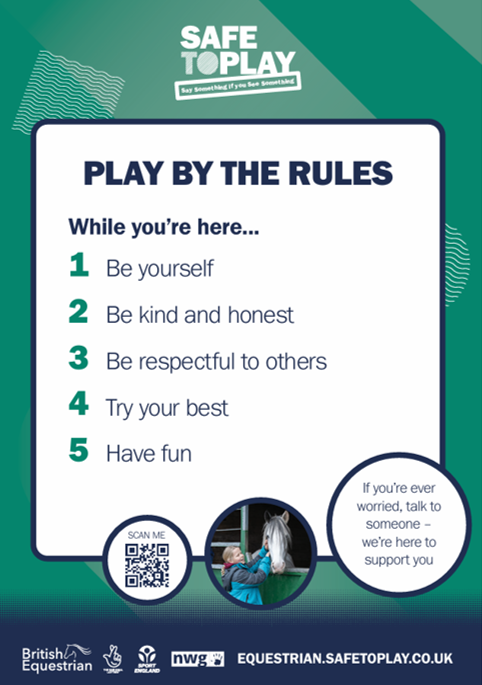
code of conduct for participants and members
code of conduct for parents and carers
Code of Conduct for Spectators
code of conduct poster for children aged Under 8
code of conduct poster for children aged 8 -12
code of conduct poster for young people aged 12-15
code of conduct posters for young people aged 15 plus
Adults working/volunteering at events
A code of conduct for staff and volunteers at any sports event should include these four principles:
- respect the rights of children, young people and adults at risk, promoting their welfare and their individual needs
- promote relationships with participants and others that are based on openness, honesty, trust and respect. They must not engage with participants in behaviour that is abusive or inappropriate. They must respond to any concerns about a child’s or adult at risk’s welfare, and work in partnership with other organisations in the child’s best interests
- demonstrate proper personal/professional behaviour, promoting positive role models for the children, young people and adults at risk they are working with. Staff must ensure that children, young people and adults at risk are provided with a safe environment which maximises benefits and minimises risks to them
- demonstrate commitment to respecting differences between staff and participants in terms of gender, gender alignment, sexual orientation, race, ethnicity, disability, culture and religious belief systems
Preventing Abuse of Positions of Trust
This briefing is for all those involved in equestrian sport – coaches, officials, volunteers and parents, and aims to help promote responsible relationships within sport and prevent the manipulation and exploitation of young people. Those in authority positions have a positive contribution to make a young person’s welfare, providing that appropriate, positive relationships are maintained. This briefing should be read in conjunction with all other British Equestrian safeguarding policies and procedures, which are available here.
These documents should help you to create meaningful positions of trust at your event.
Maintaining Professional Boundaries
adults working with children
Ratios of adults to children
If you're planning and running events for children, it's important to consider the appropriate supervision ratio of adults to young people under the age of 18. This will minimise any risks to children, enhance the benefits they draw from the activity, reassure parents and carers, and provide some protection for those responsible for providing the activity in the event of concerns or incidents arising. You should consider supervision levels for all parts of the event, including non-competition periods and down-time.
Anyone undertaking the supervision role should have been recruited and vetted (using a criminal record check) for suitability and understand their role and responsibilities. The ratio of supervisors to children/young people will depend on a number of factors...
- the ages of children and young people
- gender
- additional supervision/support needs of some or all participants, such as disability or age
- nature of activity (for example, whether it's taking place in an arena or out on a cross-country course)
- competence/experience of horses and riders for the specific activity
- recommended minimum supervision ratios
While your risk assessment may well indicate the need for an enhanced level of supervision and staffing for a particular activity, the following tables show recommended adult to child ratios. These are based on Ofsted guidelines and would be suitable for most organisations working with children and young people.
| Age of participants | Number of adults | Number of children |
|---|---|---|
| 4–8 years old | 1 | 6 |
| 9–10 years old | 1 | 8 |
| 11–18 years old | 1 | 10 |
Recommended supervision ratios for trips and events
| Age of participants | Number of adults | Number of children |
|---|---|---|
| 10 years and under | 2 | 8 |
| 11 years and over | 2 | 10 |
If there is an accident or incident you should ensure there is always someone available to supervise the remaining children. Coaches working with children should try to ensure that they do not work in isolation. Regardless of the overall supervision ratio agreed, at least two adults should be supervising children/young people at all times. If the group of children is male and female, there should be male and female adult supervisors. The NSPCC has produced some useful guidelines on how to manage a lone working situation.
Emergencies
In the event of a medical emergency involving someone under the age of 18, the emergency services should be contacted on 999 and their instructions followed.
If a young person is required to leave the site – for example, they have to go to hospital – one of the supervising adults should take them, leaving the second adult behind to supervise the remaining young people.
Young people as supervisors
Many equestrian disciplines provide opportunities for under-18s to coach, officiate or organise events for other children and young people, including achieving qualifications and awards. These positive opportunities allow young people to develop skills, experience and confidence, but shouldn't mean that organisations should depend on them to take full responsibility for managing groups. Young people in coaching or other roles should only supplement the adult with overall responsibility for supervising the activity. The NSPCC have produced some useful guidelines for using young people as volunteers. and the attached guidelines outline the requirements that Centres must follow when employing children at their yards.
Physical Contact
We have attached guidelines for how physical contact between adults and children in sport can take place appropriately and safely. There may be a number of circumstances in a sports context when it is appropriate for an adult to touch or have direct physical contact with a child. Parents need to feel confident that contact between those running the activities and children are safe and appropriate. Adults in sport need confidence that their actions cannot be misconstrued. Children have a right to say what level of contact they are comfortable with. This briefing should be read in conjunction with all other safeguarding policies and procedures, which are available here.
Missing Children
Children can sometimes go missing during events. It's therefore essential that event organisers have procedures in place to provide clear guidance on how staff and volunteers should respond in these circumstances.
When a child is reported missing, you should generally allow a maximum of 20 minutes before calling the police.
Below is a template for a missing child form, which you should make available at your event in the event that a child goes missing.
Missing Child Form (word doc.)
Photography (including video)
Before taking photos
You may choose to have a photographer at your event, be it a professional photographer or a nominated member or the organising committee. The individual intending to take the photographs must have authorisation to do so from the event planners, venue management and any other key stakeholders and be clearly identified as an official photographer.
Children and their parents/carers must be informed how, where and for how long the photo will be used and provide their written consent for the photography to take place.
A template consent form can be downloaded below:
Video/ Photography Consent Form (word doc.)
Video/ Photography Consent Form (pdf)
When publishing photos
If you're planning to publish the photos anywhere, such as in a newsletter or on your centre or club's social media channels, there are a few things you'll need to remember...
- don't include the full name of a child whose photo is being used. If naming a child or group of children, only use their first names because this will reduce the risk of inappropriate or unsolicited attention
- avoid including other identifying information about children, such as their school, friends and other hobbies and interests, because this information can be used by others to identify them
- be clear about how and for how long photos will be securely stored
- report any inappropriate content to the Member Body Safeguarding Officer as soon as possible
In any promotional material or publication
If you're planning to provide photos to publications such as newspapers or magazines, or to use them as part of a publicity campaign, there are additional considerations to be aware of...
- where possible, use graphics, models and illustrations rather than photographs
- only use images of suitably dressed riders in correct safety equipment
- focus on the activity not a particular child – avoid full face and body shots
- permission should be sought in writing from riders, and their parents, before using their image
- remember that if the young person is named, don't include a photograph. If a photograph is used, don't name the young person
It should be noted that responsible newspapers/publications are now publishing the names of children in group photography in alphabetical order, not in the traditional ‘left to right’ way. This is in order to make identification of the children harder. Event organisers should adopt this practice when dealing with all publicity.
Away Trips
Travelling away to competitions is a regular event for many clubs and teams. Trips may vary from short journeys across town or involve more complicated arrangements involving overnight stays and events overseas. Even what may appear as the most straightforward of trips will require some level of planning. The following will outline a number of issues that need to be considered when travelling with children.
Overnight trips – travelling abroad checklist (word doc.)
Overnight trips - travelling abroad checklist (PDF)
Guidelines on transporting children and young people
